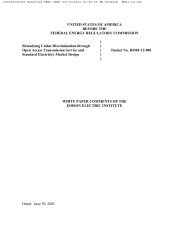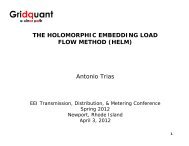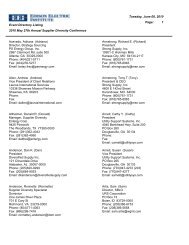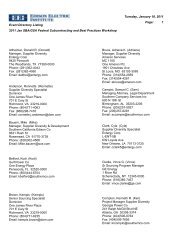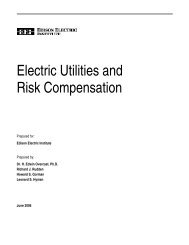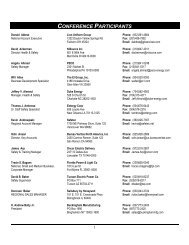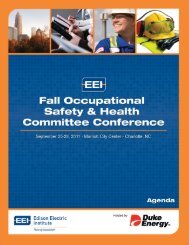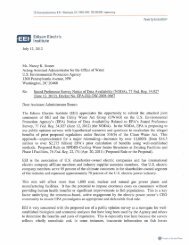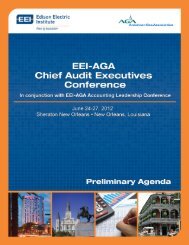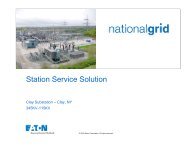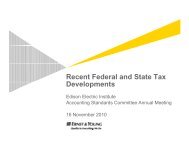Survey Questions - Edison Electric Institute
Survey Questions - Edison Electric Institute
Survey Questions - Edison Electric Institute
Create successful ePaper yourself
Turn your PDF publications into a flip-book with our unique Google optimized e-Paper software.
Chapter 6: Undergrounding Costs<br />
Out of Sight, Out of Mind 2012<br />
The economics of undergrounding utility infrastructure has always been the overarching challenge for the<br />
utility and its customers who wanted lines put underground. If the cost of undergrounding were nearly the<br />
same as overhead construction, the decision would be easy, but that is not the case.<br />
The 2012 EEI survey also collected data on the estimated cost per mile for new overhead construction, new<br />
underground construction, and the cost to convert from overhead to underground. The survey collected data<br />
on the percentage breakdown of these costs between material and labor to determine if underground<br />
construction is a more labor intensive and costly process.<br />
Collecting data and comparing costs from across the country presents many challenges. First, it should be<br />
noted that all of these costs are high-level estimates based on averages or a utility’s typical construction<br />
approach. There are many different variables to contend with, including customer density (urban, suburban,<br />
and rural), soil conditions (sandy to rocky), labor costs, construction techniques, vegetation, and voltage<br />
levels. This report has attempted to handle these variables in two ways, as follows:<br />
First, data has been collected based on customer density, defined as:<br />
Urban─150+ customers per square mile<br />
Suburban─51 to 149 customers per square mile<br />
Rural─50 or fewer customers per square mile<br />
Second, the report seeks to identify the range of costs for each category discussed, identifying<br />
the highest and lowest estimated costs in each category.<br />
In addition to the challenges noted above for the data collected for this edition of the report, there is also<br />
some difficulty comparing data between the previous editions of the Out of Sight, Out of Mind reports.<br />
Several companies participating in each report have been different, leading to variances between high and<br />
low values within each of the data sets and the ratios between overhead and underground values in the<br />
comparisons. In this edition, very few utilities from high cost areas of the country provided data for this<br />
report. This could give the false impression that the cost of underground construction and the cost of<br />
conversions from overhead to underground are much less than it actually is compared to other areas of the<br />
country.<br />
Because each construction project is unique due to load, number of customers served, and various<br />
construction parameters, there is no precise cost per mile to build utility facilities of any type for any utility.<br />
The cost data in this report is not meant to be the absolute range in which utility construction costs must fall;<br />
rather, it is intended to provide a range of cost data that utilities have estimated on various projects. Also,<br />
because of the complexity of calculations involved with these costs, they are not typically updated<br />
frequently.<br />
Since the previous edition of this report, the cost of building electrical facilities has increased in all locations<br />
and construction categories.<br />
<strong>Edison</strong> <strong>Electric</strong> <strong>Institute</strong> 29



